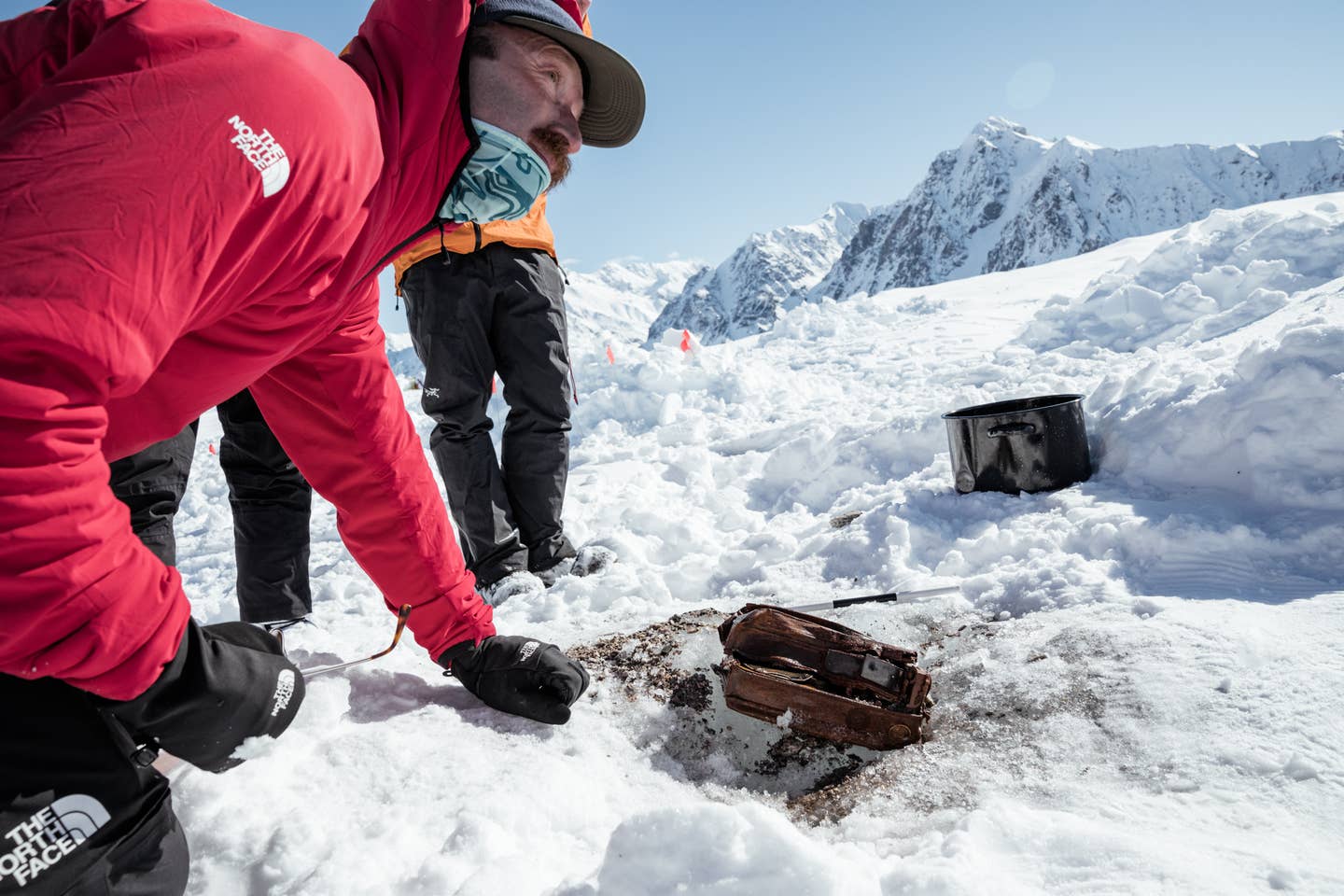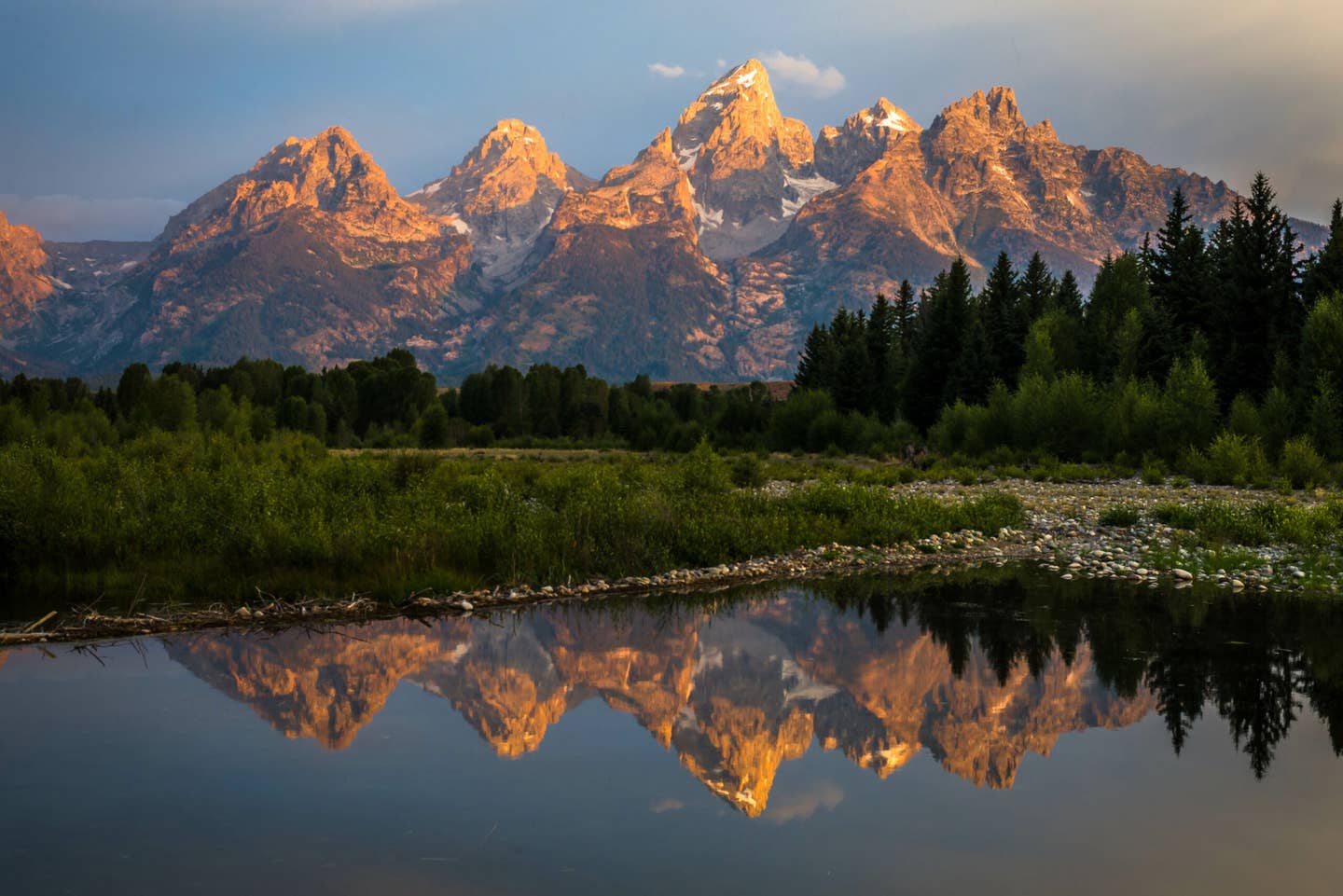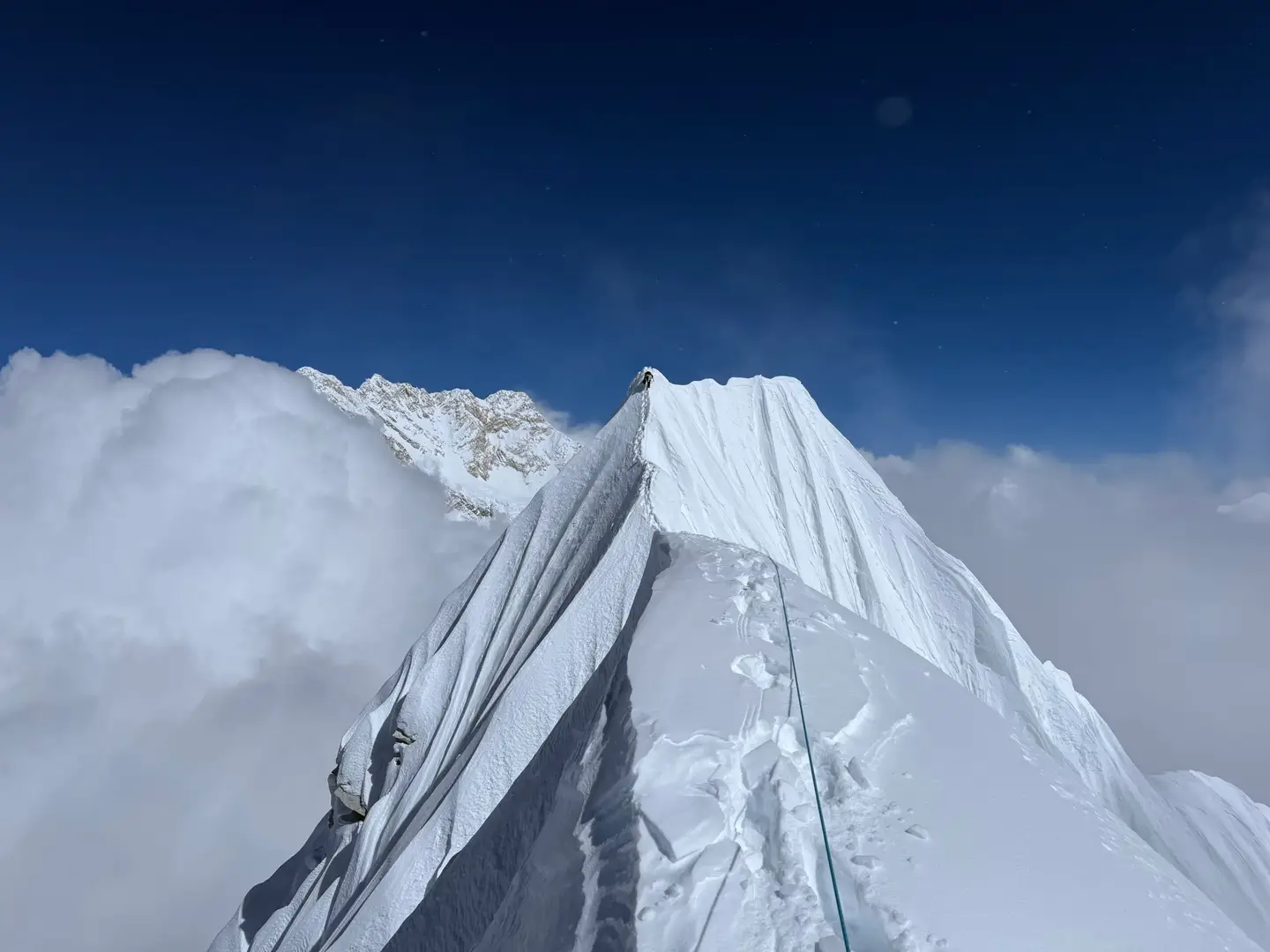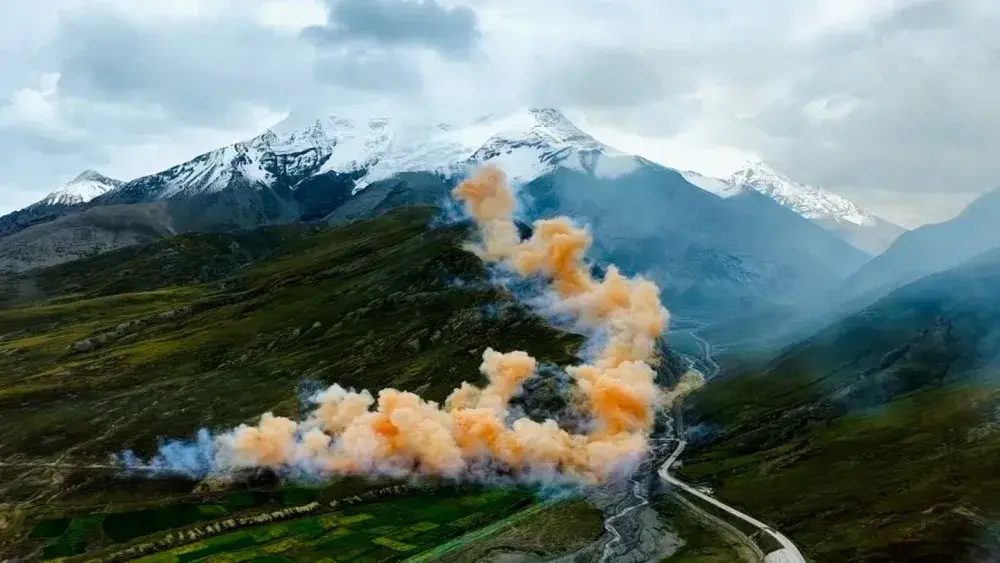

Griffin Post’s Inside Line on Finding Washburn’s Lost Cache
Popular Stories
 Griffin Post at the discovery site of Bradford Washburn's abandoned 1937 camera cache. | Leslie Hittmeier photo.
Griffin Post at the discovery site of Bradford Washburn's abandoned 1937 camera cache. | Leslie Hittmeier photo.
Now here’s a real-life treasure hunt story. After a multi-month search spread across three separate expeditions, professional skier and mountain explorer Griffin Post discovered a historic cache of camera and climbing gear abandoned in 1937 by legendary mountaineers Bradford Washburn and Robert Bates. Washburn and Bates, members of the Harvard Mountaineering Club embarked on an attempt to climb the then highest unclimbed peak in North America, Mount Lucania. The 17,150-foot summit lay in wildly inaccessible terrain deep inside the Saint Elias Range, straddling the border of Alaska and the Yukon amidst the planet’s largest non-polar ice cap. The young and eager Washburn already had several unsuccessful attempts to climb big peaks, but in 1935, he convinced The National Geographic Society to fund an expedition into what is now Canada’s Kluane National Park and Reserve on the Traditional Territory of the Kluane First Nation, located in Canada’s Yukon Territory to be the first to take aerial photos and map the majority of the area’s glaciers and peaks. That groundbreaking 1935 trip was the first time Washburn laid eyes on Lucania, and inspired him to return to climb it.
Part of a four-man expedition including Russell Dow and Norman Bright, Washburn and Bates chartered a flight with pilot Bob Reeve onto the Walsh Glacier at the foot of Lucania to avoid nearly impossible glacier crossings to get there. After flying out three times in May 1937 to stash expedition gear, Reeve flew Washburn and Bates onto the glacier on June 18th, only to be trapped on the ice for five days during a heat wave and subsequent rain storm that nearly destroyed the plane. After some modifications were made to the aircraft, Reeve was able to make it back off the glacier, but was forced to abandon the original plan to fly Dow and Bright out. Suddenly, Washburn and Bates were stranded on one of the most remote glaciers on the planet. In true spirit, the two decided to press ahead with their climb anyway, ultimately reaching the summit of Lucania despite constant threat of avalanches and weather, not to mention the technicality of the climb itself. Their descent, and subsequent escape from the mountains, turned into more of an adventure than either could have ever imagined. After abandoning a cache of gear that contained several of Washburn’s cameras, including a Fairchild F-8 aerial camera, a DeVry “Lunchbox” model and a Bell & Howell Eyemo 71A, the two trekked for nearly 100 miles through springtime melt before being discovered and rescued by members of the Kluane First Nation.
 Griffin Post searching for extra clues at the discovery site. | Leslie Hittmeier photo.
Griffin Post searching for extra clues at the discovery site. | Leslie Hittmeier photo.
In early 2022, Post and TGR launched a series of expeditions with the help of The Kluane First Nations, Parks Canada, Protect Our Winters, and Sierra Nevada Brewing Company to find Washburn’s lost cache and study the movement of some of the most remote glaciers on the planet inside Canada’s Kluane National Park to better understand the impact of climate change in this part of the world. Professional snowboarders Jeremy Jones and Robin Van Gyn joined Post on an initial exploratory mission before Post returned with a team of scientists to complete the search. We caught up with Post to learn a little more about the motivations behind undertaking an exploratory expedition of this magnitude.
Griffin, you’re known for your exploits in the skiing world, but tell us a little more about you as an explorer. How long has this mission been a dream of yours?
Griffin Post: Throughout my career, I’ve always been driven by curiosity, and would call myself a life-long learner. Planning ski expeditions is great, but at a certain point you’re looking for some more significance beyond climbing and skiing a mountain. I’ve always been drawn to places that have a combination of remoteness, stunning mountains, and a bit of a story – and this corner of the Yukon definitely checks all those boxes. A few years ago, I was doing some research for a ski trip in this area and was looking for beta photos, and some of Washburn’s shots kept coming up. I found a 1938 American Alpine Journal report of him and Bates’ first ascent of Mt. Lucania that chronicled them barely making it out of there alive. That was the trip where they left the camera and that was documented in a documentary film and David Roberts’ 2002 book Escape from Lucania. With those photos, I compared some of the spots to present-day satellite imagery to try and figure out exactly where they were in 1937 and dropped a pin on a map with an estimation.
Last year, I came across that pin again and realized that I was still really interested in learning more about that expedition and started doing some more research, which ultimately led to this mission.
 Griffin Post sets up base camp on one of three expeditions to find Washburn's cache. | Tyler Ravelle photo.
Griffin Post sets up base camp on one of three expeditions to find Washburn's cache. | Tyler Ravelle photo.
What ultimately inspired you to try to find the gear cache?
GP: Following their expedition, Washburn and Bates shared some video recordings that had some of the most compelling footage of that era’s mountaineering I’ve ever seen. You read about all these classic adventures and try to imagine them – but this was one of the first ones where the expedition was truly brought to life through the film. Back then, siege-style tactics were popular, but these two guys were pioneers in what we now call “fast-and-light” style. It was just the two of them trying to climb this massive and remote peak, and a whole lot went wrong.
In your eyes, who was Bradford Washburn?
GP: Washburn was truly a multi-dimensional character. Outside of climbing, he was a lot of things – a cartographer, a photographer, a glaciologist, a museum director, to name a few. He mapped Denali, the Grand Canyon, Everest, and founded Boston’s Museum of Science at age 28. It’s inspiring to learn about his drive to stray away from doing just one thing. He really lived life.
 Kluane National Park is home to the Earth's largest non-polar ice cap. | Tyler Ravelle photo.
Kluane National Park is home to the Earth's largest non-polar ice cap. | Tyler Ravelle photo.
Have you included a scientific aspect in any of your previous expeditions?
GP: There’s always been a scientific element to going into the mountains on these trips, though for me, it’s mostly been anecdotal research – documenting how the mountains are affected by climate change and other factors. This was my first time involving intentional research in the field. We brought along a glaciologist named Dr. Dora Medrzycka.
Were there challenges with performing scientific research in the field?
GP: Our expedition glaciologist Dora could not have been a better fit. She was fun, smart, tough, and truly fit into the crew, which is not necessarily easy to do. Prior to arriving in Whitehorse to head into the mountains, we had never actually met in person, so she was definitely a wildcard, and I was a little unsure about it all. Down the line though, she would prove to be an indispensable member of the team who would give us much-needed reality checks on the science.
 Griffin Post compares Washburn's archival photographs during the hunt for the cache. | Tyler Ravelle photo.
Griffin Post compares Washburn's archival photographs during the hunt for the cache. | Tyler Ravelle photo.
Tell us a little about the process of the discovery. What technology and methodology did the team use?
GP: Based on that initial photo research, we had a pretty good idea of where the basecamp was 85 years ago, but the thing about glaciers is that they can move a lot over that time. Our initial question was “where did it end up?” due to all that movement. We dug into satellite imagery and some other tools to predict that movement, but we really would have no idea how accurate that modeling would be until we went out into the field to try to find the cache.
 Griffin Post and Dr. Dora Medrzycka excavating the artifacts on the glacier. | Leslie Hittmeier photo.
Griffin Post and Dr. Dora Medrzycka excavating the artifacts on the glacier. | Leslie Hittmeier photo.
The interesting thing about the glaciers in Kluane is that this particular one experienced at least two glacial surging events in the last 85 years. These both lasted between one to two years. A glacier is always moving, pushing ice downhill, but during a surge event, that movement ramps up greatly. Where many glaciers don’t move more than 100 meters in a year, during these surges, this glacier sometimes moved upwards of 15 meters a day. That made the predictions that much harder to make.
 Griffin Post and Jeremy Jones enjoy a cold one after a long day on the glacier. | Tyler Ravelle photo.
Griffin Post and Jeremy Jones enjoy a cold one after a long day on the glacier. | Tyler Ravelle photo.
Sign Up for the TGR Gravity Check Newsletter Now
So, using that knowledge and data from satellite imagery, we wanted to find the cache to verify the accuracy of these methods. The data was very scarce since we were fairly confident the North Branch of the Walsh Glacier (where the camp was) had been studied very minimally.
How did having a glaciologist on the trip help the research?
GP: Dora was truly the science lead. Out there, you’ll come up with lots of crazy ideas on where you think stuff might move – but luckily, she nipped a lot of bad ideas in the bud. You don’t have Google to help answer questions out there, and there were definitely a few rabbit holes I went down with my predictions where she luckily responded with a laugh and “No, that’s just not how glaciers work.”
 Griffin Post and Dr. Dora Medrzycka on the glacier. | TGR photo.
Griffin Post and Dr. Dora Medrzycka on the glacier. | TGR photo.
Did you really think you were going to find the cache?
GP: I was hopeful, but I knew that it was akin to finding the proverbial needle in the haystack. For us, the most likely possibility was that as the cache moved down the glacier, a crevasse would have opened and swallowed it before closing back up, losing it forever. A lot can happen in 85 years on a glacier.
So, when at the 11th hour, we actually found it, we were undeniably excited. On our last scheduled day out there, Dora was looking at these medial moraines (piles of debris created where two glaciers converge) that Washburn had referenced in his book, so we knew they were likely camped someplace near it. Dora noticed some snowy gaps in the moraine, which she identified as markers of where those two surges had occurred and deduced that one was from the 1960 surge. That meant the cache must have been way further down, so we eagerly moved much further down the glacier than we had originally been looking.
We ended up finding some wands and random pieces of gear pretty quickly, only to be really disappointed when I picked up a Mountain House food package. I’m no expert, but I’m pretty sure Washburn wasn’t eating those back in the 30s. However, we realized that stuff was probably from the early 90s, and based on how far it had likely moved, knew that we had to look even further down. So, we just kept looking.
The next day, after half the crew had already flown out, one of our cinematographers Erich Roepke found a pile of skis, ice axes, and what looked like a camera. We all hustled over and realized we had done it. In the end, the cache had traveled over twice as far as the original projections had predicted.
 Cindy Lee Scott from Parks Canada at the discovery site. | Leslie Hittmeier photo.
Cindy Lee Scott from Parks Canada at the discovery site. | Leslie Hittmeier photo.
What's the historic and scientific significance of the find?
GP: Really, we have two data points now – where the gear started and where it ended 85 years later. Since no real glacier research happened in the Kluane before the 1960s, when some of the first systematic aerial photographs were taken, that gives us three decades more of data on how these glaciers behave, which is valuable. Lots of data on glacial and mountain movement exists in ranges like the Alps, but there really isn’t much up here, so it feels really good to contribute to that.
The cameras we recovered are in a lab with Parks Canada in Ottawa now and are being painstakingly restored to develop what was on the film that was still loaded in there. I’m really excited to see some of Washburn’s lost frames from that time.
Who helped make the trip possible?
GP: I initially received a grant from POW last September, which really kept the ball rolling because no matter how good an idea may be, in reality they take funds to execute. Sierra Nevada came on board a couple of months later, which really shows their commitment to exploration and that intrinsic curiosity that runs through us all. I’d also be remiss if I didn’t mention how helpful the staff from Parks Canada was throughout the whole process, the glaciology department at the University of Ottawa and of course the entire team at TGR that believed in the vision.



